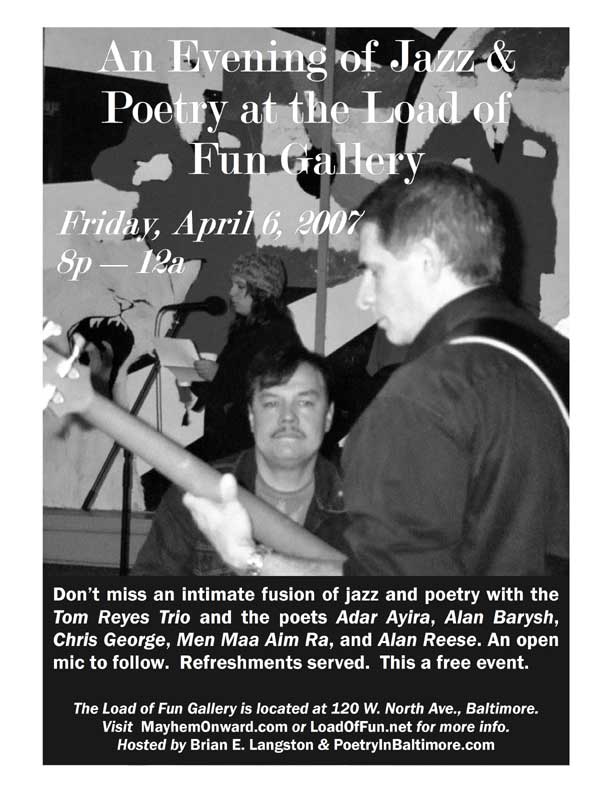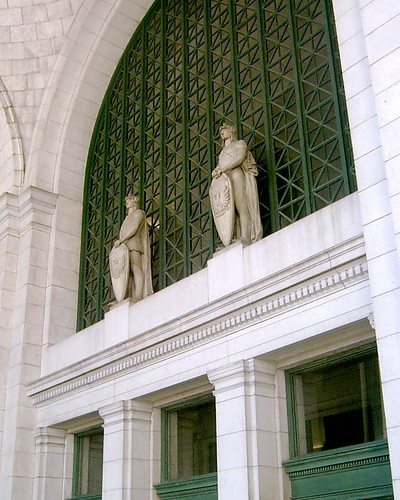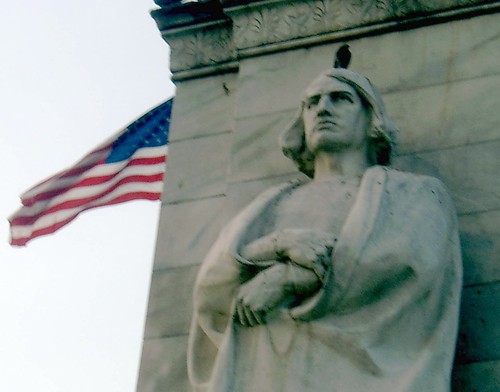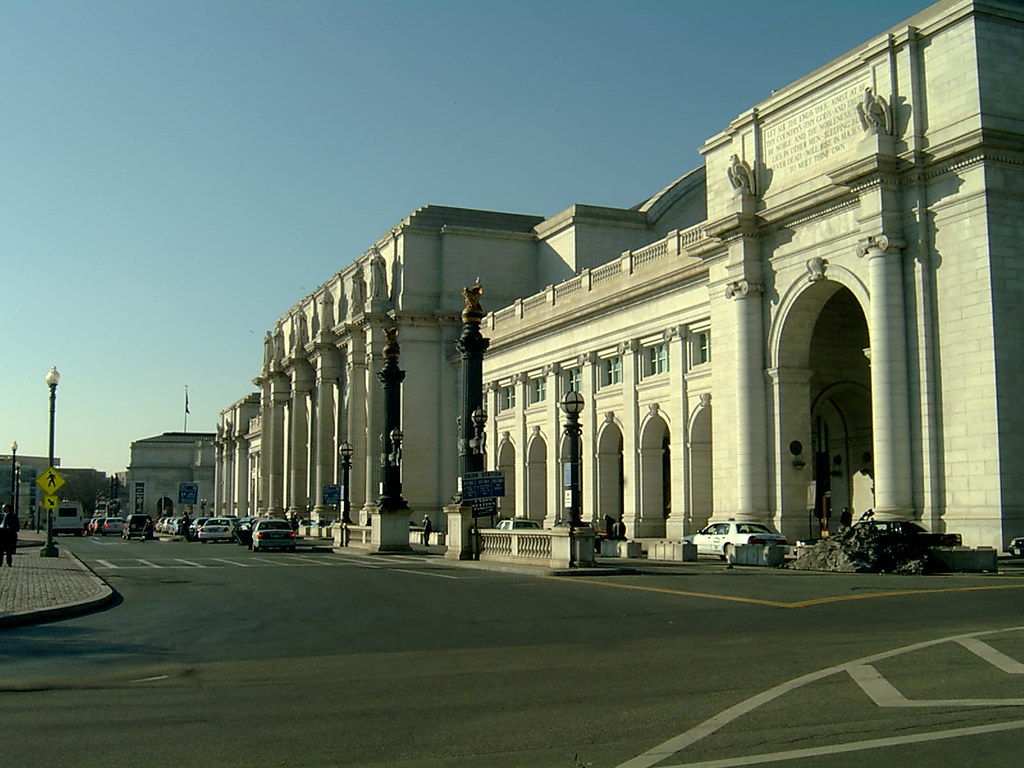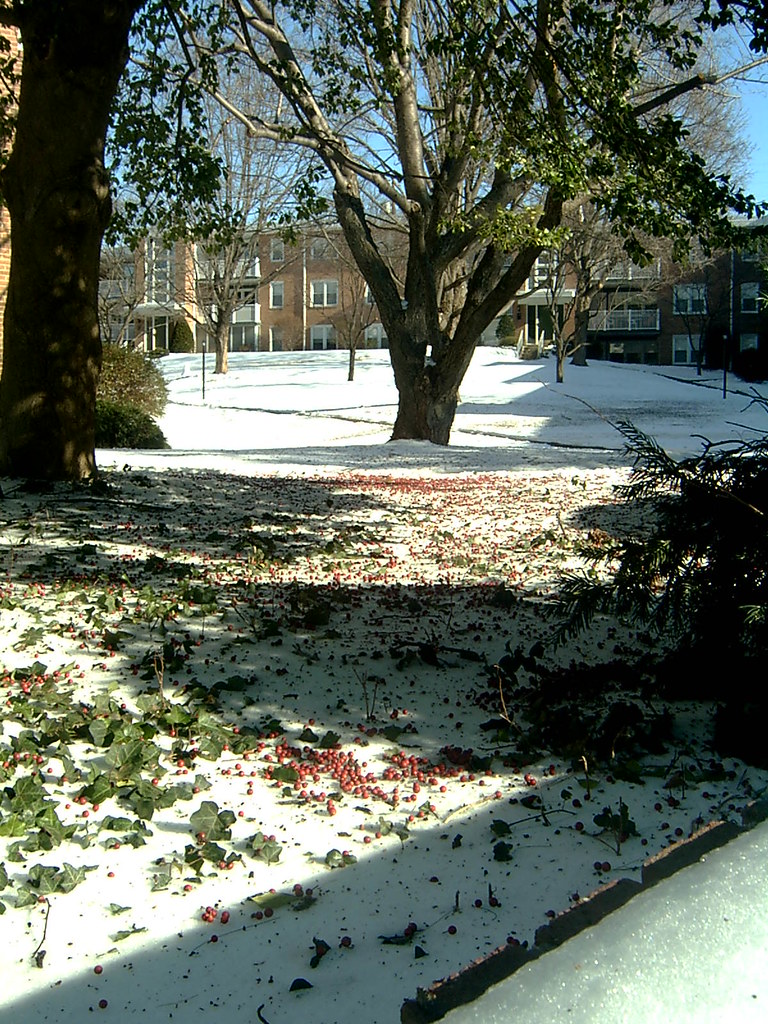First Snow: Union Station
Eddie the Baseball Umpire disgorges
me from his Red Top Cab; I'm staring
down at pansies drowned in wet snow;
snap the vignette with cameraphone
despite sleet pinging my cheek.
I'm going home on wings of eagles!
Or just the mudslush MARC, ha ha.
Slurred footprints in snowgrass,
sugared holly, oak--holy smoke!
Cabs stream and surge, bus lurches,
grim commuters haul their lives;
giant wreaths hang like bagels
on facade. Whisky-breath, sackcloth bum
craves a buck. I refuse, smoke my cigar,
watch him lurch through the glass doors.
Then I bustle for MARC to the Big B:
bum's passed out on the marble floor,
Smoky-Bear-hatted cops bent over him.
Christopher T. George 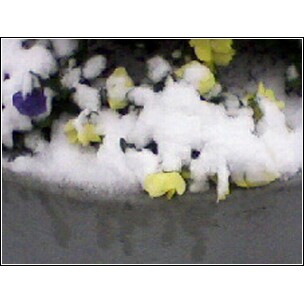
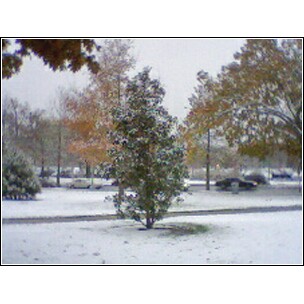
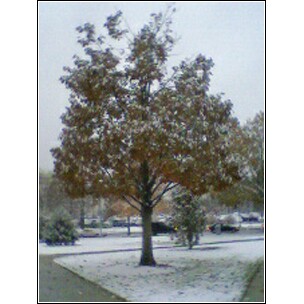

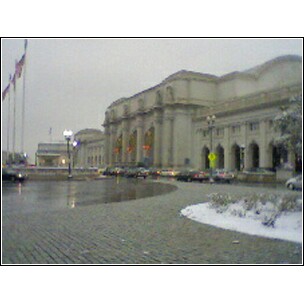
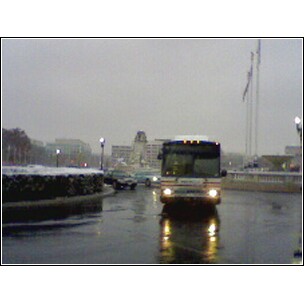



Here are some cellphone photographs of the light snow covering we received yesterday in Washington, D.C., the first snow of the year in the Baltimore-Washingon metro region. My Samsung camera is out for the count... maybe needs a new memory card - I change batteries and it just seems dead, and i don't have a power cord (got the cam second hand). If anybody has any ideas, let me know. :(
All the pics are at Union Station after I was dropped off by the red cab driven by Eddie the Umpire, as noted in the poem. Eddie, an older black cabbie, surprised me by saying that when he doesn't drive a cab he is a baseball umpire.
First a shot of pansies in a flowerbox covered by the snow through shots of the front of the station and forecourt with taxis and buses and the Columbus monument in the distance, ending with a shot of one of the three large Christmas wreaths hung on the station facade before I ran for my train to Baltimore!
Thursday, December 06, 2007
First Snowfall, Union Station, Washington, D.C., December 5, 2007
Posted by
Christopher T. George
at
11:28 AM
1 comments
![]()
Wednesday, November 21, 2007
Peace Is Just a Word
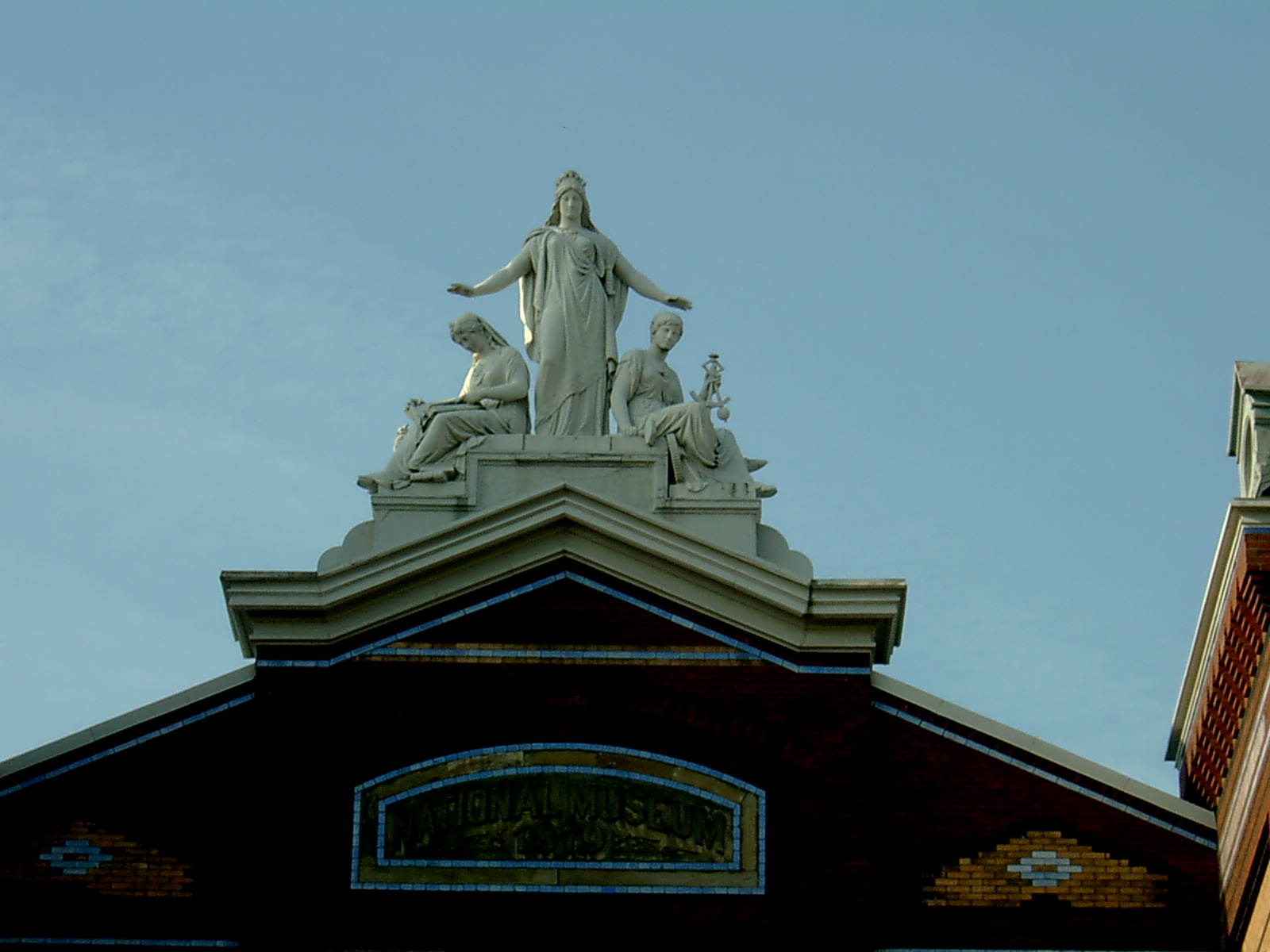

Peace Is Just a Word
I stroll the National Mall this cool fall morning;
yellow leaves sift from an elm as joggers crunch
pebbles between the white Capitol dome, surmounted by
the effigy of Liberty with eagle-headdress, sun-rose-
red needle of Washington's monument. A group of U.S.
Marines thunder by, scarlet banner flapping, gripped
by the lead runner. They holler, "Sound Off!"
Swathes of sweat stain gray tee shirts; they thud
by the Hirshhorn museum's outdoor sculpture garden,
no-nonsense bronze of a Henry Moore nude, the grim
figures of Rodin's "The Burghers of Calais." A plump
mockingbird ascends to the contorted topmost branch
of Harry Lauder's Walking Stick and commences to sing.
Christopher T. George
Thanksgiving is tomorrow and there is much to be thankful for and there is much to regret and decry. Life as ever is alloyed, never truly joyful nor totally bleak. Lord save us.
Posted by
Christopher T. George
at
6:21 PM
0
comments
![]()
Wednesday, September 19, 2007
Charles Carroll of Carrollton's 270th birthday celebration, Baltimore, September 22

It's unusual for me to find an event in which I can combine my interests in creative writing and history, but I will be doing just that, reading a number of recently written poems with a historical theme for the Charles Carroll of Carrollton 270th birthday celebration on September 22nd here in Baltimore.
The Carroll Mansion at 800 E. Lombard Street in Old Town, Baltimore, is pleased to announce Charles Carroll of Carrollton's 270th birthday celebration on September 22nd. Charles Carroll (1737-1832) had many accomplishments throughout his long life: the last surviving signer of the Declaration of Independence and only Catholic signer; lawyer and politician; Maryland delegate to the Continental Congress; United States Senator. (Click on the title above to access the Wikipedia entry on Charles Carroll.)
The organizers have separated his accomplishments and interests into several themes. Artists and poets have created works that express the concepts of industry and innovation, revolutionary thinking and building a new nation, and the strength of family.
John Davis, Danny Jones, Brian Kaspr, Mike McNeive, Molly McNulty, and Carlos Vigil will all be exhibiting work for this one time event. I, Christopher T. George, along with Anne Bracken, Shirley Brewer, and Matthew Smith will share our respective works as they relate to the themes of Charles Carroll's life.
The organizers say, "Join us for light fare and drinks as we celebrate history, art, and poetry."
Following are a couple of the poems I have written especially for the event:
The Last Signer
To Charles Carroll of Carrollton (1737–1832)
Yes, I outlived them all:
the great and the powerful,
John Hancock, old Ben Franklin,
George Washington, Tom Jefferson. . . .
Born in an era of coaches and saddles,
I lived to see railway lines straddle
the land, even saw gas lights
illuminating Old Town at night!
Such new-fangled things in a new nation!
As faith brought promise of salvation
under the great dome of our Basilica,
we’d steamboats and Maryland rye liquor!
So far now we have come from our unease
with the King’s taxes. I was pleased
thus to sign for our Independence:
Yes! I signed my name, clear as a song:
"Charles Carroll of Carrollton"!
Christopher T. George
Eager to Serve
To Lt. Col. John Eager Howard (1752–1827)
Eager to fight the Redcoats at Cowpens,
to send Bloody Banastre Tarleton packing!
Eager to tell the old wagoneer Gen’l Morgan,
the day was still ours at Cowpens to be won!
Eager to allow the Frenchies of Rochambeau
to camp in my Howard’s Woods, good show!
Eager still to continue the fight at Eutaw Springs!
Although there my shoulder wound grievously stung!
Eager to win and woo my dearest Peggy Chew,
to unite Chews with Howards, Eagers, our few!
Eager to serve the people of my state as governor,
I sat in Annapolis and governed for many a year.
Eager when the Redcoats again came calling
to say that though I was too old to take the field
I’d rather see the city of Baltimore laid in ashes
and my four sons weltering in their own blood
than see the city taken by those Britishers!
Christopher T. George
I will also be reading some of the poems I wrote for the Liverpool 800 site since they fit with themes of Charles Carroll's era. Referenced in the above poem is "Bloody" Lt. Col. Banastre Tarleton, the Liverpool-born dragoon whose defeat at the Battle of Cowpens in South Carolina on January 17, 1781.
Banastre Tarleton by Sir Joshua Reynolds
Banastre Tarleton
Me name’s Banastre Tarleton; do you remember me?
I was "Bloody Ban" for all those things I did with glee
against the Patriots that George Washington thanked
for fighting to make Mad King George’s colonies free.
The son of merchant John Tarleton, a mayor of Liverpool:
I was a red-haired runt racking up debts at university,
headed to be a wastrel, a gambling, whoring, drunken fool,
but when I entered the army, all changed quite dramatically.
I was the smart dragoon in green uniform, plumed helmet;
I made my name capturing the Americans’ General Lee,
went down to the south and became the enemy’s scourge;
at Camden, Guilford Courthouse, I made the enemy flee.
Aye, I was Lord Cornwallis’s right-hand man, his enforcer,
I hunted down Buford’s men, gave them no quarter
at the Waxhaws. We cut them down: a sight to see.
We almost turned the tide in the south, dem me!
Got wacked by Morgan at the Cowpens, blast the fellow!
But I chased their celebrated Tom Jefferson from Monticello.
Then we British defeated Nat Greene at Eutaw Springs.
Argh, though I lost two of my blessed fingers, poor things!
Yes, I tell you truly, the war there was ours for the taking,
but the French, those yellow curs, once again did us dirty.
Rochambeau and Washington bottled us up at Yorktown.
On that sad, dishonoured day, we laid our weapons down.
I returned to Liverpool a hero: the dashing cavalryman.
I held up my mutilated hand and people cheered me on:
fishwives with branches of green shouted for Ban!
To them, I was no bloody fiend -- I was their champion!
I stood for Parliament; after a disappointment, took my seat!
As MP for Liverpool, Tarleton would never admit defeat!
I defended slavery -- you might see that as a blight on me.
It was the Tarletons’ trade -- ‘twas what made Liverpool rich!
The King made me a Baronet: Gen. Sir Banastre Tarleton.
Some prefer abolitionist Roscoe, by whom I was chastised,
but I died honoured. To Yanks, I’m Bloody Ban, yet I was
a warrior, never apologised for the colourful life I had led.
Christopher T. George
Because Charles Carroll of Carrollton lived into the Railway Age, his last public act being when he laid the cornerstone for the Carrollton Viaduct of the Baltimore and Ohio Railroad on July 4, 1828, I thought the following poem might be appropriate to read.
William Huskisson, Member of Parliament for Liverpool, was the first man killed by a steam locomotive. He was mortally injured at Chat Moss during the grand opening of the Liverpool-Manchester Railway on September 15, 1830. Author William Garfield in his book, The Last Journey of William Huskisson, chronicles the MP’s chronic accident proneness which afflicted him his whole life down to the accident which killed him.
Unlucky Husky
To be known as the first man
to be killed by a train
-- what awful luck!
You were our plucky MP,
in your prime when
you were struck,
as Stephenson’s "Rocket"
knocked you down;
now God’s got you
in his pocket.
Christopher T. George
Posted by
Christopher T. George
at
8:27 AM
0
comments
![]()
Thursday, August 30, 2007
No more billions for Mr. Bush's mistake
Dirty Deaths in Iraq
"They never told The Folks Back Home about
the filthy deaths. . . Dirty deaths were the
commonplace clowns smoking idle cigarettes
backstage at a circus filled with clowns."
Richard Condon, The Manchurian Candidate
You see a stop sign ahead and you accelerate
to avoid a roadside bomb; you're afraid you'll
end up a dirty piece of black bleeding flesh
in the wreck: head in Baghdad, feet in Basra.
You play with swivelled hand jeux de cartes
en ligne - Black Jack rules, $50 billion more
at stake without the turn of a voter's card.
You play the cards you're dealt because
you have no option: the clowns are laughing;
you want to win but you fear the joker.
Christopher T. George
********************
"Bush Wants $50 Billion More for Iraq War"
Headline, Washington Post, August 29, 2007
Contact your Congressman and tell him or her:
"No more billions for Mr. Bush's mistake."
And today's headline in the Post reads "Report Finds Little Progress on Iraq Goals. GAO Draft at Odds With White House."
The ruinous war that Mr. Bush began just runs on and on, billions poured into the desert sand, billions of dollars and weapons unaccounted for. American GIs and Iraqi civilians and others continue to die in a chaotic and worsening situation. Leaving apart the misrepresentation of Saddam Hussein's danger to the world that the Bush administration was guilty of four years ago before the war, to both the United Nations and to the American people, this war is causing a grievous wound to the American economy as well as to the standing of the United States in the world. I know the fear among Congress and those running for President is that the United States cannot now leave the Pottery Barn (using the analogy that was attributed to then Secretary State Colin Powell) without fixing the mess, and that a regional cataclysm could ensue if the United States simply leaves. The point though is that the United States has done enough damage in the area. The war cannot be "won." It is now time to turn the Iraq over to the United Nations and for the administration to work with international agencies to calm the region and rebuild Iraq.
On a nicer topic, note the following deadline tomorrow:
This is to remind you that the deadline to submit work for the Fall issue of Loch Raven Review is fast approaching on Friday, August 31. We have had the pleasure of publishing a number of the fine poets and other writers in the past and we look forward to continuing to do so. Go to our website to check out our submission requirements and also the latest issue of our quarterly electronic journal.
We might remind you that we do print an annual print issue of Loch Raven Review so publishing with us is more than publishing with a zine, it is also print publication.
While we have quite a few submissions for the Fall issue already in hand we are still looking for quality work in poetry, short stories, essays, etc. We are also interested in translations. Note that in terms of original poems we prefer nonpublished work.
We are pleased to say that our literary journal is getting to be one of "the" places to publish. We hope you will submit if you have not already done so.
Best regards
Chris George and Jim Doss, Editors
Loch Raven Review
Posted by
Christopher T. George
at
5:51 AM
0
comments
![]()
Tuesday, August 28, 2007
Happy Birthday, Liverpool!
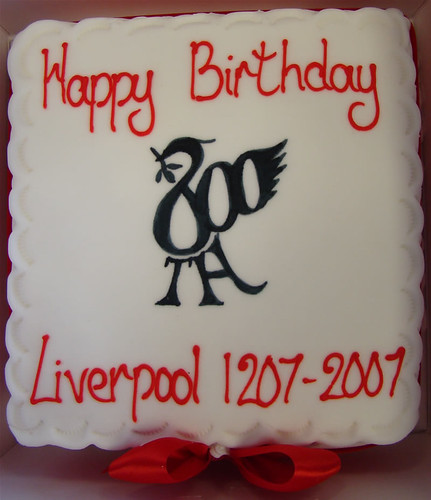

Queen Elizabeth II and British Prime Minister Gordon Brown today led the birthday tributes to the city of Liverpool, as it celebrates its 800th birthday. Hit the title above to read some of the tributes.
Above: The dome of Liverpool's 18th Century Town Hall with Minerva as the allegorical figure at the pinnacle and the city's official 800th year flag celebrating its history 1207-2007.
Top: Official birthday cake for the city. Courtesy of Sayer's Bakery.
Bottom: Yours truly in my Liverpool FC regalia, pictured in our computer room. HAPPY BIRTHDAY, LIVERPOOL!!!!!!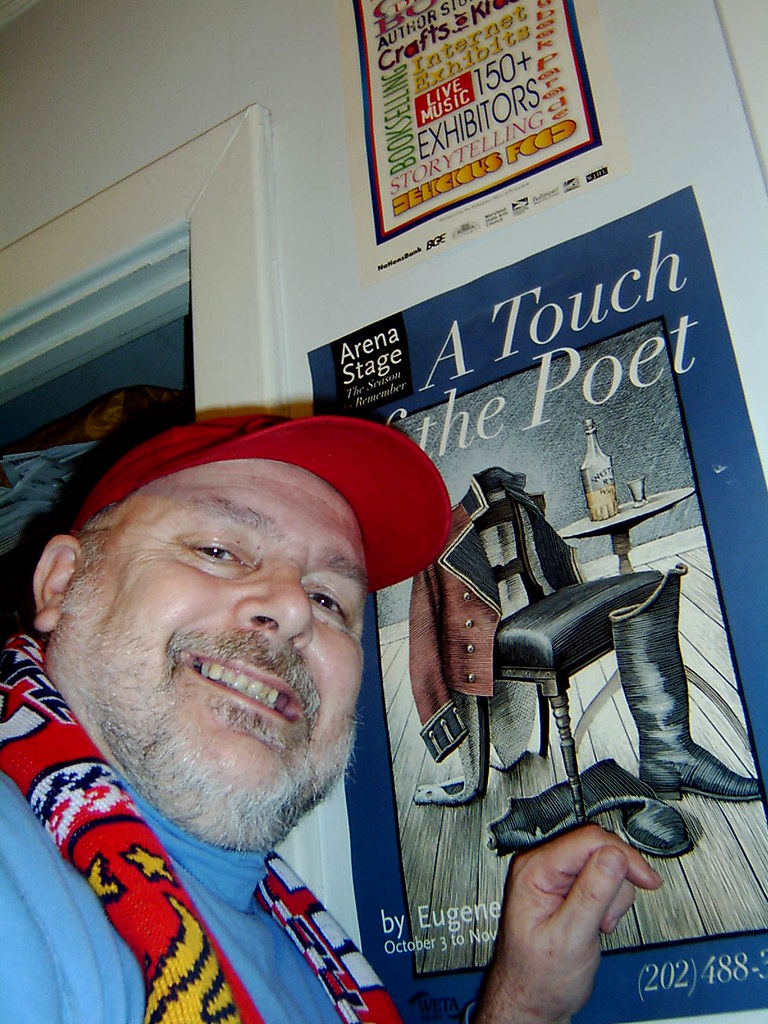
Posted by
Christopher T. George
at
1:53 AM
0
comments
![]()
Tuesday, August 21, 2007
Chris George in Mersey Minis "Longing" Anthology
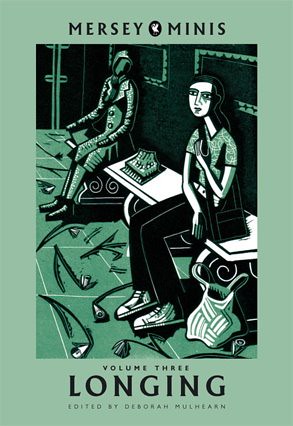

I am delighted to say that I along with Yoko Ono Lennon and poet Roger McGough, and local writers such as Dave Calder, Gladys Mary Coles, Matt Simpson, and Dave Ward will have works published in "Longing," Volume 3 of the Mersey Minis series of books about Liverpool and to be given out for free as a present to the people of Liverpool on the city's 800th birthday, Tuesday, August 28. The launch of the book is to be at St. Nicholas's churchyard on that day: recognized to be the oldest place in the city to have been in continual use since the 13th Century. That's a view of St. Nicholas's Church up above, with St. George's Flag flying in a gale during the visit Donna and I made to the city in May.
The short impression that I am publishing in "Longing" concerns St. Nicholas's and is called "Beatles St. Nicholas Sonata" and was occasioned by coming back late to the Crowne Plaza Hotel after a Yo Liverpool forum meet-up at the Santiago de Alma in Penny Lane (formerly St. Barnabas Cottage where my Uncle Bill and his family lived some 80 years ago!!!). Donna and I had been on a tour of little known Beatles sites in the city along with Gerard Fleming, to whom the article is dedicated. Unfortunately I won't be able to make it back to Liverpool for the book launch but I have asked that Ged and a guest represent me.
The list of writers included in "Longing" and places to obtain the book in Liverpool city center can be found by clicking on the title above. It's a very well done series. I bought a copy of "Landing," the first book in the Mersey Minis series, while we were in the city and I have got a lot out of reading the impressions of writers famous and not so famous who have visited the city over the years.
I have just realised the figure at the background on the graphic on the front of "Longing" is the statue of Eleanor Rigby in Liverpool by Tommy Steele.
The picture of me below was taken by Ged Fleming in St. Peter's Churchyard, Woolton, by a family grave that has the name "Eleanor Rigby" on it. It was in the church hall a few hundred yards away that Paul McCartney met John Lennon in August 1957 -- fifty bloody years ago! However Sir Paul has denied that the grave had anything to do with his use of the name in the song. The "Eleanor" part appears to have come from Eleanor Bron, an actress in the Beatles' 1965 movie, "Help!" It seems to stretch coincidence but it's nice to see the grave and to make the connection that Paul "might" have got the idea for the song from seeing her name on the grave. . .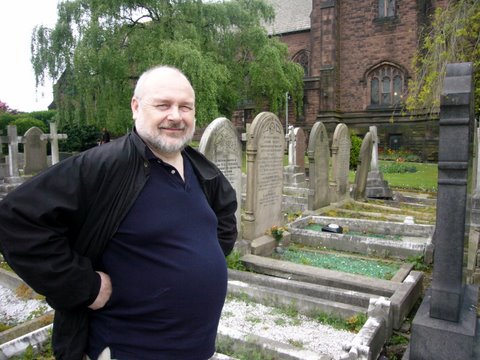
Posted by
Christopher T. George
at
9:47 AM
0
comments
![]()
Tuesday, August 14, 2007
Burting In Again

Crepe myrtle in bloom in Washington, D.C., on a recent morning. The flowering shrub, which also blooms in lavender and white, blooms at the height of the hot and humid U.S. summer.
Burting In Again
I got yelled at
on the DC Metro
for "burting in"
ahead of a couple:
he spoke with
a Dixie accent
like molasses.
Burt,
to ride Metro
that's what
you gotta do,
"burt in."
Did I have
my burting-in
face on
like Burt
Reynolds in
"Deliverance"?
I hope I did.
Christopher T. George 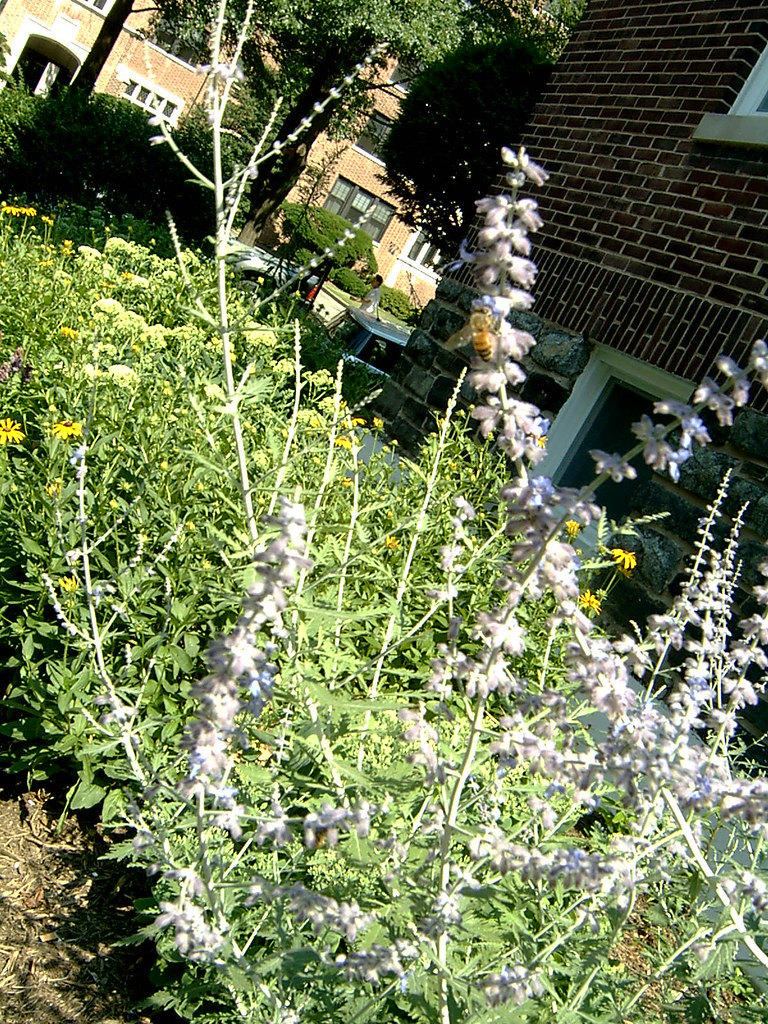
Watching Honey Bees Pollinate Lavender on July 4
I take out the trash--a Glad Bag bulging
with my wife's old shoes and shoe boxes.
And I stand smoking a cigar, pressed flat
against the Twenties wall of our apartment
house watching tawny bees pollinate the blue-
purple flowers on overgrown aromatic branches.
An ambulance rushes by, its siren blaring,
while the bees continue their essential work.
Christopher T. George
Zen Stream
a push, a pull
continual motion
the mill wheel turns
trout swim upstream
life's eternal duties
a baby in her booties
poems get written
sermons get delivered
one life begins and
another's severed
the song continues
a lullaby
a lament
lies and love
humans down here
and God above
Christopher T. George
Beckham's Parking Cars
Three days after Beckham made
another million coming off
the bench in a downpour to help
the LA Galaxy lose to DC United,
as I drive into the garage, I spy
Rodney with his cap and gold
tooth wearing the England
shirt of no. 7: "Beckham."
I greet him and he tells me
"That's my name,
Rodney Beckham."
Christopher T. George
Posted by
Christopher T. George
at
7:23 AM
0
comments
![]()
Wednesday, August 08, 2007
Heat in Washington DC and the Liverpool 800 Poems Project

It has taken some days to get posting on the Blog back up to speed. Sorry. There was some glitch in the template that I could not resolve. My thanks to Charlene Dewbre for helping me solve the problem.
Top photograph yours truly this morning in my shirt from the first American Ripper convention held in New Jersey in 2000. It's getting up in the 90's here in Washington DC and the bosses where I work decided to allow us to dress down -- so those who wanted to come in wearing t-shirts and shorts! A photograph taken with my new Samsung camera phone.
Next photograph of a cheeky squirrel in the gardens of the Smithsonian Institution on the Mall in Washington, as per the poem below, a cinquain.
Squirrels
observed: cheeky
guys who pinch the veggies
from the Smithsonian gardens!
Look see!
Christopher T. George
I am presently heavily involved both in myself contributing poems in honor of the 800-year history of my native city of Liverpool, as well as helping behind the scenes in terms of proofreading and fact checking.
Organizers Roger Cliffe-Thompson and Billy Moon report that they presently have 522 poems collected so far with 278 to go to meet the target of 800 for the city's 800th anniversary on August 28.
To hear an interview with Roger and Billy go to the Radio Merseyside Interview at http://www.sparrowsteeth.com/billy/media/miscalanious/ .
New Jersey poet Laurie Byro and New Yorker George Wallace are among the poets who have contributed to the project. If you are interested in contributing a poem, go to http://www.poem800.com/
There are also talks underway to have a possible Liverpool - New York video or podcast link to celebrate the Liverpool anniversary and the links between the two cities. If things work out as planned, simultaneous readings will take place in New York and Liverpool later this year. Watch this space.
Photograph courtesy of Kev Keegan.
Posted by
Christopher T. George
at
9:07 AM
2
comments
![]()
Sunday, June 17, 2007
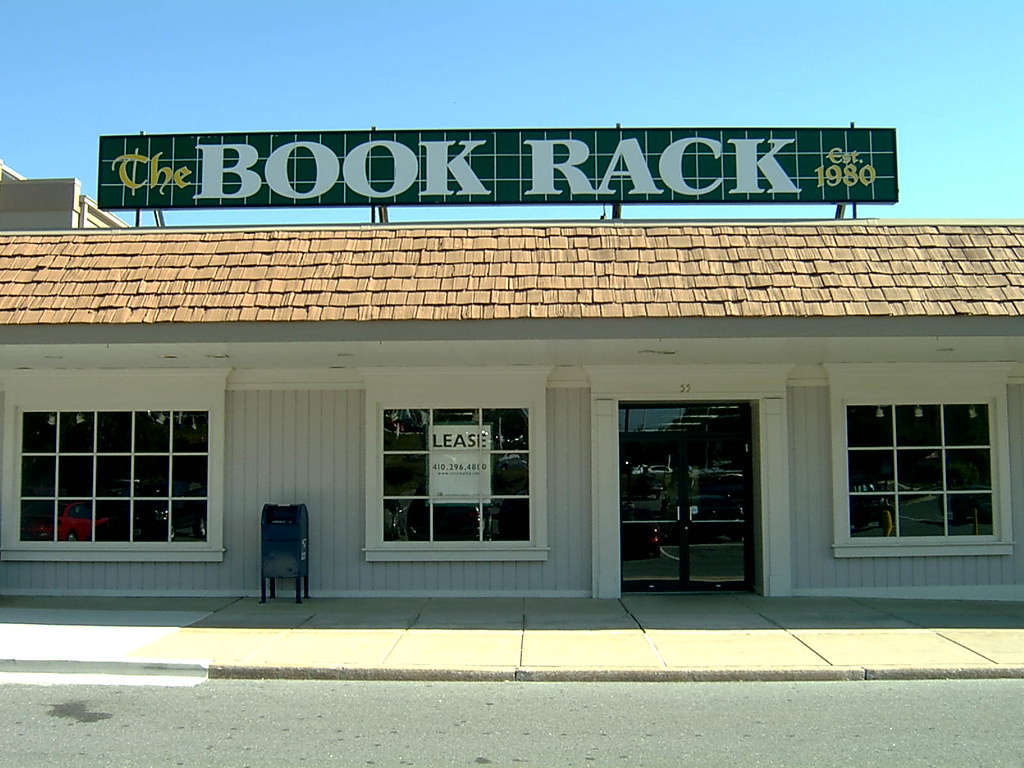

Lost in the Mail
It's steamy summer at Sudsville;
sparrow hot-bobs on the sidewalk
as I sit on a molded plastic seat
reading Bukowski's Post Office.
I've got Joe's letter from Christmas
as a bookmark; it glides under seat.
He wrote to say he'd see me at Easter
for a Bud at the Whistling Oyster;
but Easter's long come and gone.
I risk the Timonium traffic to cross
York Road, headed for the Book Rack
to seek a book of Bukowski's poems;
but the store's empty: For Lease
sign on window--all-out-of-words.
Next door Party Shop's closed too,
St. Paddy's shamrock above signs
saying Exit, Thank you for your
business and Computers Down. Will
Open A.S.A.P. It's party-downtime,
rowdy-on-down time.
Christopher T. George
Posted by
Christopher T. George
at
8:28 AM
4
comments
![]()
His Annual Diaries
This is another poem that I wrote about my uncle. His funeral service was held at Poole Crematorium on Friday, May 25, and was a Quaker service, my uncle having been a Quaker for the past 25 years or so. The crematorium was a brick building in woods on a hilltop northeast of Poole. Purple rhododendrons were in bloom as we drove up the driveway. The service was dignified and apt, with the Quaker silence and people getting up to speak from their hearts at intervals. I apologized for my aged mother's inability to be present and read my poem, Receptacle, that I had written about Douglas and his influence on me. Roger Gillet spoke about my uncle's Merseyside childhood and that after becoming a Quaker he had helped select the site for the Quaker meetinghouse in Poole, an old semi-detached house with a datestone of 1888. For years, Doug and his late wife Inge lived above the meetinghouse, and Doug continued to live there up until his final illness. The following poem was occasioned by my wife Donna and I having the opportunity to visit the flat before the funeral. I am thinking that one of the Quakers laid out his diaries on his bed since with his memory loss in his last years it is doubtful that Douglas did so.
His Annual Diaries
My uncle, age 92, is three weeks dead;
in a line, someone has neatly laid
his diaries on his narrow bed.
In leather covers of brown, green, and red:
reminder notes, the things he did,
names of friends who died,
promises and decisions made
-- a civil servant, retired, each bit
noted -- was this how he dreamed it?
Christopher T. George
Posted by
Christopher T. George
at
8:00 AM
0
comments
![]()
Saturday, May 05, 2007
All the Dear Dead
I am at that point in life in which I have known more people who have now passed on compared to people I know who are still alive. . .
I reported earlier on the death of my cousin, Kenneth Matchett, who had been manager of the Bournemouth Symphony Orchestra as well as later, the manager of a trout farm for Lord Shaftesbury near Knowlton in Dorset. Now my uncle, Douglas Matchett, a former civil servant, has died age 92 in Alderney Hospital, Poole. Here are a couple of poems about his passing.
To My Uncle Douglas, in a Coma
Now they call to tell me you've suffered
a massive stroke, cocooned in a coma
at ninety-two, an ocean-width from me.
In the sea off the pine-filled chine
of Canford Cliffs, I will prepare
to scatter your ashes. We sat by
the bowling green, sipped tea; a magpie
floated down from the pines, strutted
among the shiny black bowling balls.
You will never write your life story.
Christopher T. George
The "life story" was something that Doug often talked about completing in letters and phone conversations. However, he was not really a self-reflective person and such writing would have been very difficult for him. He could be a raconteur and tell a story well, but putting his ideas down would be less easy, and I think somewhat stilted. At any rate, Donna and I will visit Poole, Dorset, on 26 May and possibly I will see then whatever progress he may have made on his magnus opus. A term he used, incidentally, for a booklong autobiographical poem called Toxteth that I published in 1976.
My uncle had a lifelong problem with memory even before senility robbed his faculties in the last years. My mother tells an anecdote in which as a young man he purchased a book called Think Clearly to help him remember and that he came downstairs to tell visitors about the putchase of the book, then forgot why he came downstairs.
Grieving
Isolated in my grief, I drive downtown
to pick up Mom's prescription, decide
not to say her brother passed yesterday,
don't wish to spoil tonight's wedding
of the granddaughter of a late friend,
in which Mom will stand in for grandma.
Now, I am driving home. I'm wearing two
red baseball caps, in memory of my uncle,
famous for wearing two ties to a funeral.
The world's shot; it's all bad news today.
Yet, on a streetcorner, a poet passes
out fresh copies of The Daily Word.
Christopher T. George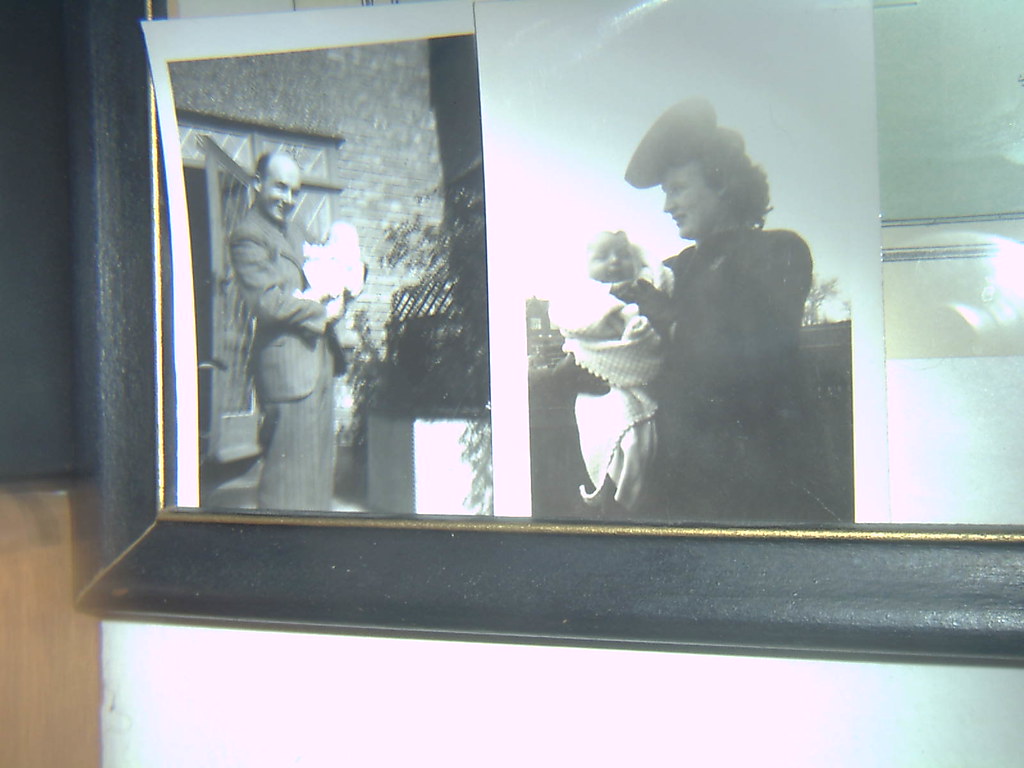
The left photograph shows my Uncle Douglas holding me in April 1948 at my christening at age three months, and the right photo my Mom on the same occasion. Get a load of that hat!
Posted by
Christopher T. George
at
11:24 AM
4
comments
![]()
Monday, April 09, 2007
Reading to the Masses, Part I
This past Friday, I appeared at an evening of poetry and jazz at the Load of Fun Gallery in Baltimore. As I listened to the jazz trio and the performing poets, my attention was drawn to a plant below the tripod of a video camera.
To a Yucca Dying in an Art Gallery
Poetry & jazz interweave;
words speak to the throb of
bass guitar, keyboard riffs,
drummer's sultry rolls.
Black & white nudes,
graffitied peace symbols
decorate the walls while
a gray painted cat yowls
behind the jazz trio.
A yucca expires by
a bottle of spring water;
spiky leaves turn yellow
while folk sip Shiraz
& Cabernet Sauvignon.
This yucca craves
a desert, longs
to face naked rock,
thirsty sky, not
die among these
metaphors; it lusts
for silent, open sand,
not the shush of high-hat,
the torture-tickle
of wire brushes.
Christopher T. George
As mentioned previously, we will be holding a Loch Raven Review Reading upcoming at 8:00 pm on Friday, May 4 at the Load of Fun Gallery at 120 W. North Ave. in Baltimore. Sponsored by Load of Poetry and Julie Fisher at http://www.poetryinbaltimore.com/news.php. We will feature a number of the fine local and out of town poets we have published. Open mic follows. For more info., call 443-418-4762 or email julie@poetryinbaltimore.com. Driving directions at http://www.loadoffun.net/Directions.html
In May, I will be back "home" in Liverpool for a couple of readings in connection with the publication this month of the anthology Living on Hope Street edited by Liverpool performance poet Jim Bennett. Jim himself has just won the title of best European individual slam poet. I understand the readings will be at the Everyman Theatre on Hope Street on Wednesday, May 16 and at Albert Dock on Saturday, May 20.
Posted by
Christopher T. George
at
9:46 AM
0
comments
![]()
Friday, March 16, 2007
More Union Station Poems
Halyards and Pigeons
The cab drops me at the curb east of Union Station;
in the Mass Ave circle, the halyards of state flags clank
against the metal flag poles; I watch the drama of three
gold eagle-topped stars and stripes furl and flow
above the station forecourt by the cab line
set against the lemon-cloud afternoon sky. Wish
I had a camcorder to record the scene, saunter
across the street; a gaggle of girls giggle past; am I
the butt of their amusement? Atop of the marble globe
on Columbus's statue, a male pigeon struts for a female;
I think of new chicks; a brief flutter of wings:
they mate. There! The act's done!
Christopher T. George
And before there was spring, which might or might not be coming -- the magnolias and daffodils, crocus and snowdrops say it is but still wet snow is expected today (!) -- one from a couple of weeks ago:
American Centurions
I take shelter under the arcade
of Union Station; light snow slants
in and wets my face. Above the station
doors stand marble centurions, mailed
and armored, fit for Valhalla with winged
helmets. In a dusky window I see
a Hispanic busboy spread a crisp white
table cloth in the America Restaurant.
Later, I sip a Scotch and water,
my train hurtles into the heartland.
I watch snow cover rough pasture
and bison bend their backs
to tufts of straw, chowing down
as if it's their final meal.
Christopher T. George
Well, it must be Spring because my co-editor Jim Doss and I are about to release the Spring issue of Loch Raven Review. Issue will be up in the next several days. Check us out at http://www.lochravenreview.net. This issue features poetry by Penny August, Sandy Sue Benitez, Jason Biederman, Gary Blankenship, Bob Bradshaw, Jared Carter, Jim Corner, Susan Culver, Adam Elgar, Allen Itz, Thomas Jardine, Charles Levenstein, Sabyasachi Nag, Michael North, David Nourse, Stuart Nunn, Kathy Paupore, Kenneth Pobo, Don Schaeffer, S. Thomas Summers, Ron Wallace, Marceline White, Wiltshire; interview with Charles Levenstein by Christopher T. George; translations of Hugo Ball by Jim Doss; an essay by Gary Blankenship; fiction by Charles Levenstein and Oliver Murray; and reviews by Jim Doss and Christopher T. George.
Another piece of news is that there will be a Loch Raven Review Reading upcoming at 8:00 pm on Friday, May 4 at the Load of Fun Gallery at 120 W. North Ave. in Baltimore. Sponsored by Load of Poetry and Julie Fisher at http://www.poetryinbaltimore.com/news.php. We will feature a number of the fine local and out of town poets we have published such as, hopefully, Annie Bien, Dan Cuddy, Jim Doss, Christopher T. George, Morgan Lafay, Michael North, and Alan Reese. Open mic follows. For more info., call 443-418-4762 or email julie©poetryinbaltimore.com. Driving directions at http://www.loadoffun.net/Directions.html
Monday, March 05, 2007
Grab the Brass Ring! Chris George on Flickr etc

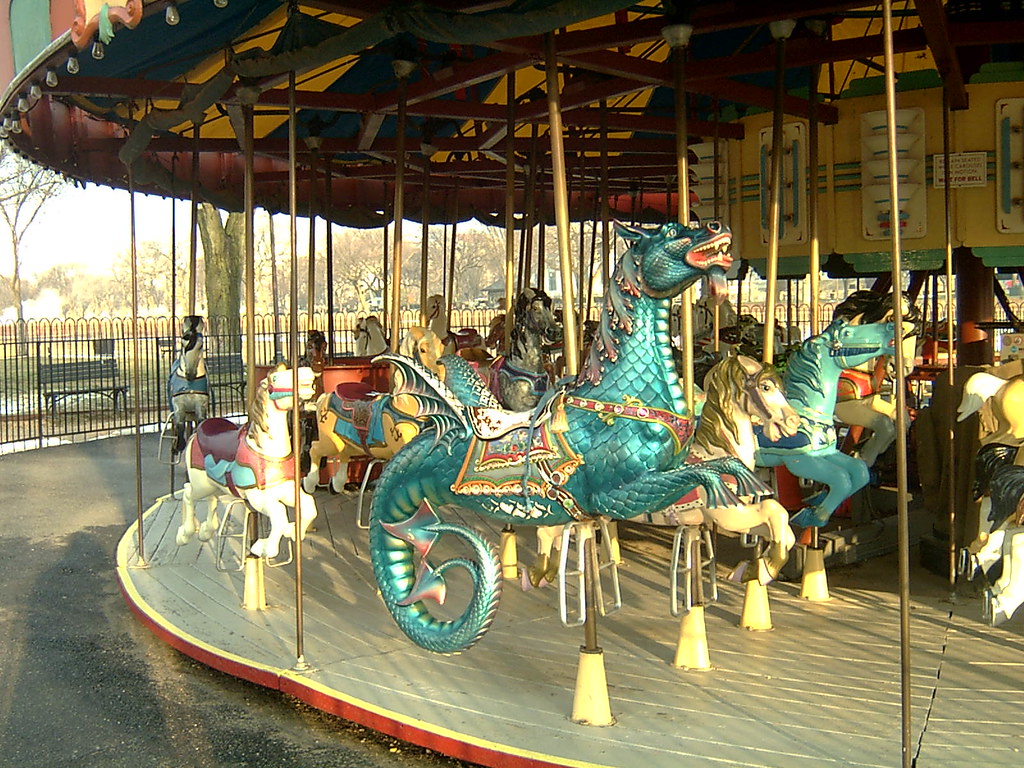
Posted by
Christopher T. George
at
6:55 AM
2
comments
![]()
Labels: carousel, D.C., Smithson, Smithsonian, Washington
Thursday, March 01, 2007
Bamboo Growing Inside a Big Glass Front
Posted by
Christopher T. George
at
12:47 PM
0
comments
![]()
Wednesday, February 28, 2007
Is Winter Over Yet?
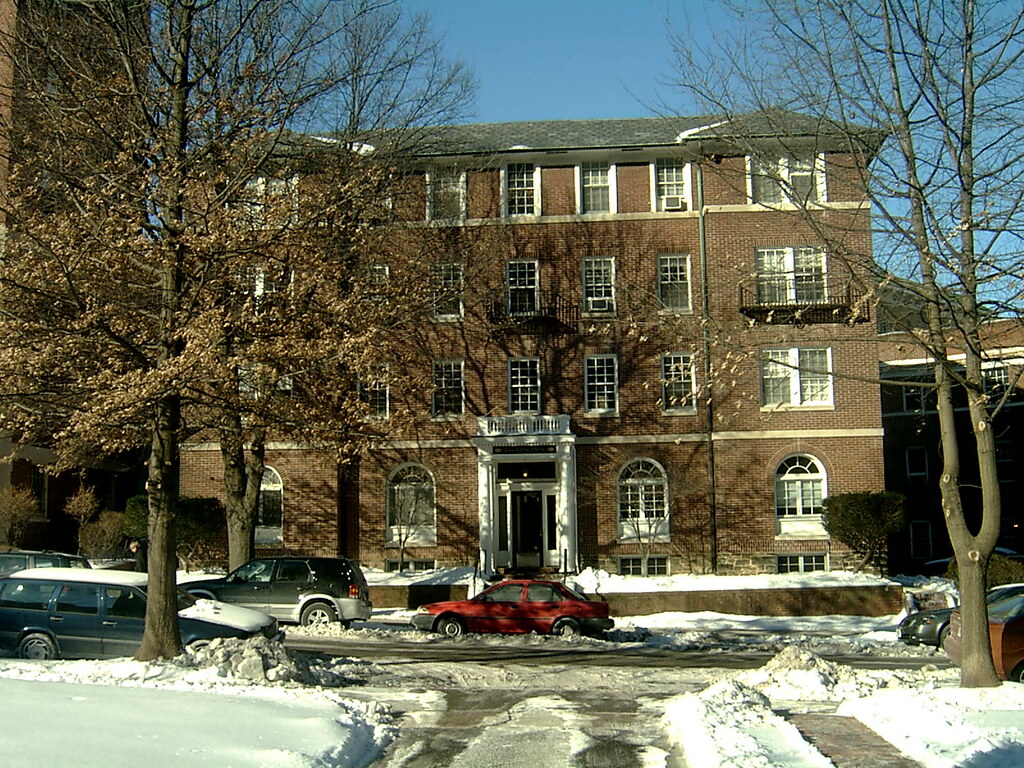
Posted by
Christopher T. George
at
10:54 AM
0
comments
![]()
Wednesday, January 10, 2007
Christopher and Robin

"Berry Beak" courtesy of Leslie F. Miller
Today is my birthday. I am fifty nine years young, born at Oxford Street Maternity Hospital, Liverpool, on January 10, 1948. This is the same hospital where John Lennon was born eight years earlier, and there is a plaque on the building now which I believe now serves as student housing for the University of Liverpool.
Why the robin at the head of this post? "You might well arsk," as John would have said. Well, it so happens that the same day that I was born, my cousin was born to Jack and Audrey Underwood in the same maternity hospital where my Mum had moi. So they called him. . . ah, yes, you guessed it, after the character in the A. A. Milne stories, oh, Pooh! Happy Birthday, Robin, old chap!
The English robin is quite different to the American robin shown in the above fine photograph by my fellow Baltimorean, Leslie F. Miller. While the Yankee robin, Turdus migratorius (what a name!!!!), is a bigger chappie, a member of the thrush family, the English or, more correctly, the European robin, Latin name Erithacus rubecula, is more sparrow size, and is traditionally associated with Christmas and winter in general.
Homesick English colonists gave the American bird the name "robin" because it reminded them of the robin redbreast they remembered from back home. This from Ernest Thompson Seton, "On the Popular Names of Birds" (1919):
The scientists scolded the colonists fiercely for calling it a "Robin." It was not a "Robin," they maintained, it was a Thrush of the Merula section of the family; and they refused to use, print or sanction any English name for the bird except "Migratory Thrush." After a century of irascible attack, which was received in silent, ponderous apathy, the scientists were beaten. The cause of English triumphed and today actually even the scientific lists give the bird as the "American Robin," by which name it is known to every child in America, and loved because it is known.
My co-editor at Loch Raven Review, Jim Doss, chose a fine photo of the English robin to run on the cover of our Winter issue just out. To read the issue and see the pic, follow the link through the title above to see that rambunctious little songster, Erithacus rubecula, so redolent of Christmas cheer and cold English gardens!
Here is an excerpt from the story My Robin by FRANCES HODGSON BURNETT, author of The Secret Garden. It was published in 1912 and serves as a kind of follow-up to the writer's better known story, written in response to a reader who asked, "Did you own the original of the robin? He could not have been a mere creature of fantasy. I feel sure you owned him."
I was thrilled to the centre of my being. Here was some one who plainly had been intimate with robins–-English robins. I wrote and explained as far as one could in a letter what I am now going to relate in detail.
I did not own the robin–-he owned me–-or perhaps we owned each other.
He was an English robin and he was a person--not a mere bird. An English robin differs greatly from the American one. He is much smaller and quite differently shaped. His body is daintily round and plump, his legs are delicately slender. He is a graceful little patrician with an astonishing allurement of bearing. His eye is large and dark and dewy; he wears a tight little red satin waistcoat on his full round breast and every tilt of his head, every flirt of his wing is instinct with dramatic significance. He is fascinatingly conceited–he burns with curiosity--he is determined to engage in social relations at almost any cost and his raging jealousy of attention paid to less worthy objects than himself drives him at times to efforts to charm and distract which are irresistible. An intimacy with a robin--an English robin--is a liberal education.
This particular one I knew in my rose-garden in Kent. I feel sure he was born there and for a summer at least believed it to be the world. It was a lovesome, mystic place, shut in partly by old red brick walls against which fruit trees were trained and partly by a laurel hedge with a wood behind it. It was my habit to sit and write there under an aged writhen tree, gray with lichen and festooned with roses. The soft silence of it–-the remote aloofness–-were the most perfect ever dreamed of. But let me not be led astray by the garden. . . .
When I returned from the world of winter sports, of mountain snows, of tobogganing and skis I felt as if I had been absent a long time. There had been snow even in Kent and the park and gardens were white. I arrived in the evening. The next morning I threw on my red frieze garden cloak and went down the flagged terrace and the Long Walk through the walled gardens to the beloved place where the rose bushes stood dark and slender and leafless among the whiteness. I went to my own tree and stood under it and called.
"Are you gone," I said in my heart; "are you gone, little Soul? Shall I never see you again?"
After the call I waited–and I had never waited before. The roses were gone and he was not in the rose-world. I called again. The call was sometimes a soft whistle as near a robin sound as I could make it–-sometimes it was a chirp–sometimes it was a quick clear repetition of "Sweet! Sweet! Sweetie"–-which I fancied he liked best. I made one after the other–and then–something scarlet flashed across the lawn, across the rose-walk–over the wall and he was there. He had not forgotten, it had not been too long, he alighted on the snowy brown grass at my feet.
Then I knew he was a little Soul and not only a bird and the real parting which must come in a few weeks' time loomed up before me a strange tragic thing.
. . . . . . .
I do not often allow myself to think of it. It was too final. And there was nothing to be done. I was going thousands of miles across the sea. A little warm thing of scarlet and brown feathers and pulsating trilling throat lives such a brief life. The little soul in its black dew-drop eye–-one knows nothing about it. For myself I sometimes believe strange things. We two were something weirdly near to each other.
At the end I went down to the bare world of roses one soft damp day and stood under the tree and called him for the last time. He did not keep me waiting and he flew to a twig very near my face. I could not write all I said to him. I tried with all my heart to explain and he answered me–-between his listenings–-with the "far away" love note. I talked to him as if he knew all I knew. He put his head on one side and listened so intently that I felt that he understood. I told him that I must go away and that we should not see each other again and I told him why.
"But you must not think when I do not come back it is because I have fogotten you," I said. "Never since I was born have I loved anything as I have loved you–-except my two babies. Never shall I love anything so much again so long as I am in the world. You are a little Soul and I am a little Soul and we shall love each other forever and ever. We won't say Goodbye. We have been too near to each other–-nearer than human beings are. I love you and love you and love you–little Soul."
Then I went out of the rose-garden. I shall never go into it again.
FRANCES HODGSON BURNETT
Copyright, 1912.
All rights reserved
Posted by
Christopher T. George
at
5:16 AM
8
comments
![]()
